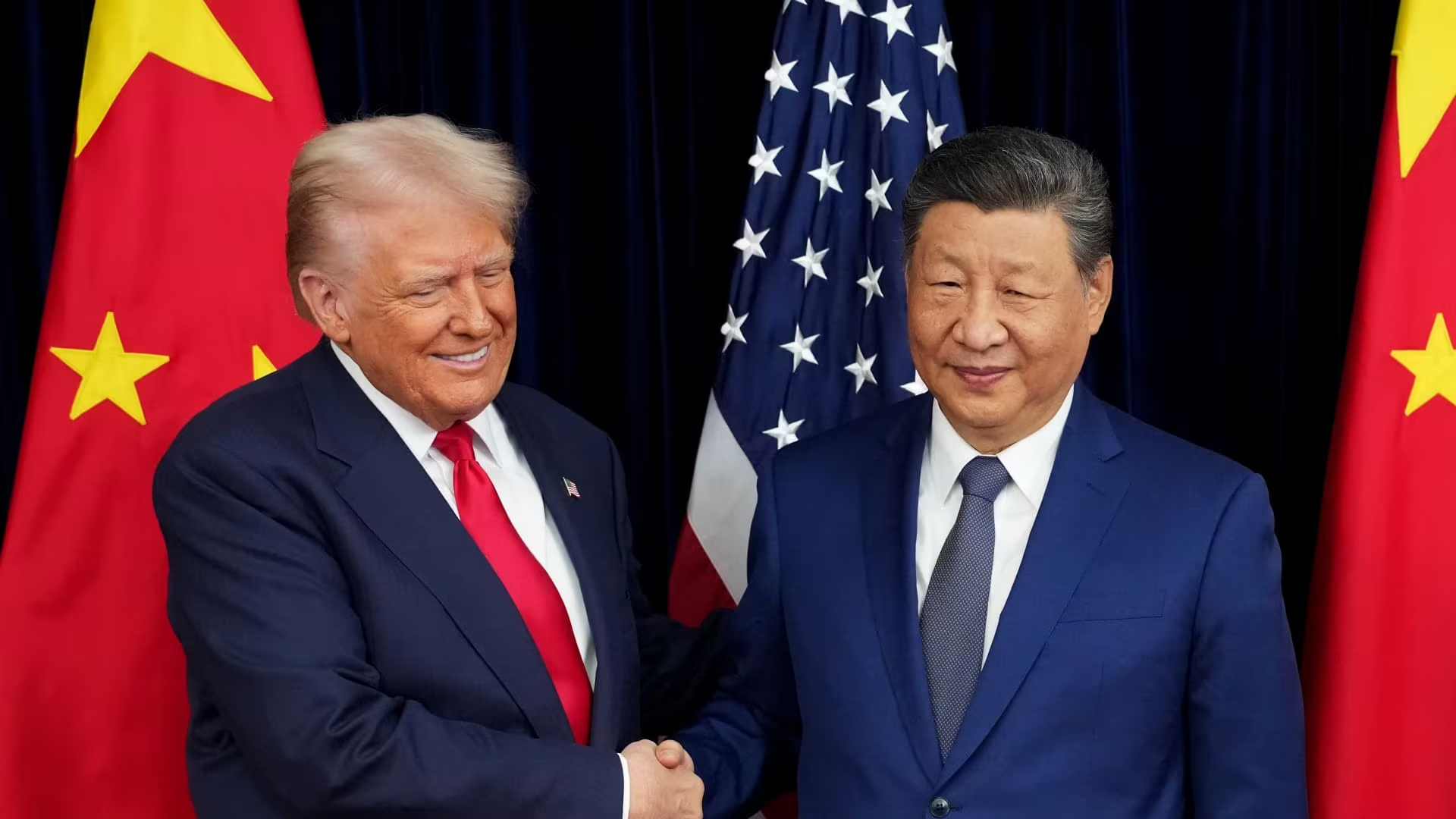High-Stakes Diplomacy: Trump and Xi Convene in Busan Over Trade Impasse

U.S. President Donald Trump and Chinese President Xi Jinping landed in Busan, South Korea, this Thursday, marking the start of a critical, highly anticipated meeting aimed at resolving persistent trade and tariff disputes that have strained global economic relations for years.
The diplomatic tone was immediately set by President Xi. In his initial remarks upon meeting President Trump, Xi emphasized the need for cooperation, stating that Beijing and Washington should be “partners and friends.”
This overture comes at a crucial juncture, as both nations face increasing domestic pressure to stabilize economic growth and provide clarity to global supply chains disrupted by retaliatory tariffs and regulatory uncertainty. The meeting is not just about tariffs; it is widely viewed as a test of the fundamental relationship between the world’s two largest economies.
The Weight of Expectation: Why Busan Matters Now
This summit, taking place in October 2025, is perhaps the most significant bilateral negotiation since the initial trade agreements were established. The primary goal for the U.S. delegation, led by President Trump, is to secure concrete commitments from China regarding market access, intellectual property protection, and a reduction in the massive bilateral trade deficit. For China, the priority is the removal of punitive tariffs that have impacted key sectors of its manufacturing base.
The ongoing trade dispute has evolved far beyond simple goods tariffs, encompassing technology dominance, national security concerns, and the future structure of global commerce. The pressure on both leaders is immense, as failure to reach a meaningful consensus could trigger a new round of economic escalation.
Core Issues Driving the Trade Impasse
The negotiations center on several complex and deeply entrenched disagreements. While President Xi’s initial statement struck a conciliatory note, the substance of the talks must address structural economic issues that have long divided the two powers. These include:
- Tariff Removal and Reduction: The immediate focus is on the substantial tariffs imposed by both sides on hundreds of billions of dollars worth of goods. A phased rollback is expected to be a key bargaining chip.
- Intellectual Property (IP) Theft: The U.S. continues to demand stronger enforcement mechanisms and guarantees against the forced transfer of technology from American companies operating in China.
- Market Access and Subsidies: Washington seeks greater access for American financial and agricultural products, alongside an end to state subsidies that the U.S. argues give Chinese companies an unfair competitive advantage.
- Technology Dominance: Underlying the trade issues is the fierce competition over emerging technologies, particularly 5G, semiconductors, and artificial intelligence, which are increasingly viewed through a national security lens.
Setting the Diplomatic Tone
President Xi’s use of the phrase “partners and friends” signals a clear desire from Beijing to de-escalate the rhetoric and find common ground, contrasting sharply with the often confrontational language that has characterized the relationship in recent years. This diplomatic framing is crucial for setting a productive environment for the intensive negotiations scheduled over the next two days.
“We should look at the relationship from a strategic and long-term perspective. China and the United States should be partners and friends, not rivals,” President Xi Jinping stated, underscoring the potential for cooperation despite current friction.

The Economic Backdrop
Global markets are highly sensitive to the outcome of this meeting. Businesses, particularly those in manufacturing and technology, have been operating under a cloud of uncertainty, delaying investment and reshaping supply chains. A positive outcome in Busan could trigger a significant rally in global equities and commodity prices, while a breakdown could lead to immediate market volatility.
Economists have repeatedly warned that prolonged trade tensions risk slowing global GDP growth. The stakes are therefore not just bilateral but multilateral, affecting economies from Europe to Southeast Asia that rely on the stability of the U.S.-China trade corridor.
Potential Outcomes and Next Steps
Analysts suggest that a comprehensive, final deal is unlikely to be reached in Busan. Instead, the focus will be on achieving a Phase One type of agreement—a framework that addresses immediate concerns and establishes a clear path for future, more complex negotiations.
Success in Busan would likely involve:
- A Commitment to Tariff De-escalation: An agreement to suspend or partially roll back recently imposed tariffs, contingent on progress in other areas.
- Specific Purchase Commitments: China agreeing to significantly increase purchases of U.S. agricultural, energy, and manufactured goods.
- Enhanced IP Enforcement Framework: Establishing a mechanism for monitoring and enforcing intellectual property rights protection.
Should the leaders fail to find common ground, the default action would be the implementation of previously threatened tariffs, further deepening the rift and increasing costs for consumers and businesses globally.
Key Takeaways from the Opening of the Busan Summit
The meeting between Presidents Trump and Xi in Busan is underway, carrying the weight of global economic expectations. Here are the essential points from the opening of the talks:
- Diplomatic Tone Set: Chinese President Xi Jinping opened the summit by calling for the U.S. and China to be “partners and friends,” signaling a desire for de-escalation.
- Location and Timing: The critical negotiations are taking place in Busan, South Korea, in October 2025, focusing exclusively on trade and tariffs.
- Core Agenda: The U.S. seeks concrete commitments on intellectual property protection and market access, while China prioritizes the removal of punitive tariffs.
- Global Impact: The outcome will significantly influence global economic stability, supply chains, and market confidence.
The coming days will determine whether this diplomatic opening translates into tangible progress on the most complex economic relationship in the world.
Original author: Evelyn Cheng, Anniek Bao
Originally published: October 30, 2025
Editorial note: Our team reviewed and enhanced this coverage with AI-assisted tools and human editing to add helpful context while preserving verified facts and quotations from the original source.
We encourage you to consult the publisher above for the complete report and to reach out if you spot inaccuracies or compliance concerns.

